On the last day of my Obon vacation I visited Kanazawa en route to Kyoto.
Minutes before I left Toyama, I bought masuzushi, a local speciality. It is a kind of pressed sushi (oshizushi) with trout, which is related to salmon. Compared to modern sushi it has a longer shelf life and can be stored at room temperature for two days before consumption.

The Hokuriku Shinkansen quickly transported me to Kanazawa. In contrast to the first day of the trip, it was sunny, allowing for a day full of outside activities. As far as I remember, every time I came to Kanazawa, it rained. This was also the case a few days earlier when I transferred on the way to Shirakawagôu.
With the good weather also came the crowds, no surprise because it was also a Sunday. I visited to Kanazawa twice and happily come back every time because the city has its charms. Therefore, I tried to see some new areas I had left out, while also enjoying some of the highlights I knew.

Freed from the heavy luggage after finding a coin locker I headed out from the south side of the station, not without taking a picture of the gate. My first idea was to walk to Omicho market, where fresh seafood can be bought for home or consumed at restaurants. Then I reconsidered and to beat the crowds and possibly have a better cost-performance I turned right to visit a Kaga cuisine restaurant I bookmarked at some point.
After walking through the city for ten minutes, I passed a library with a small park. Behind it more traditional buildings showed up along a channel. Because of the strong rainfall the day before, the level of all rivers and channels were elevated and the color was muddy.

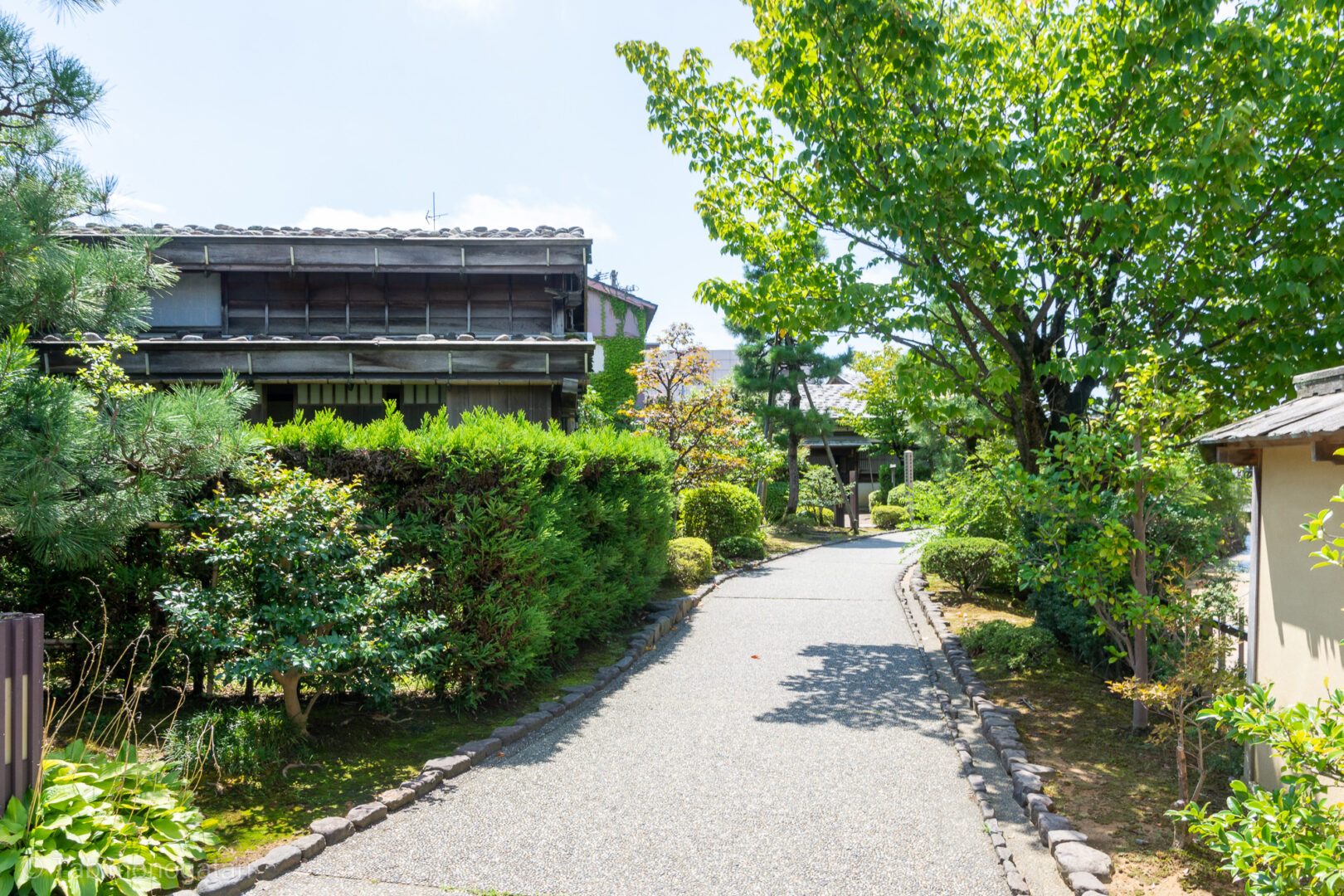

Several preserved houses from the Edo period lie along the channel, some of which can be visited for free.
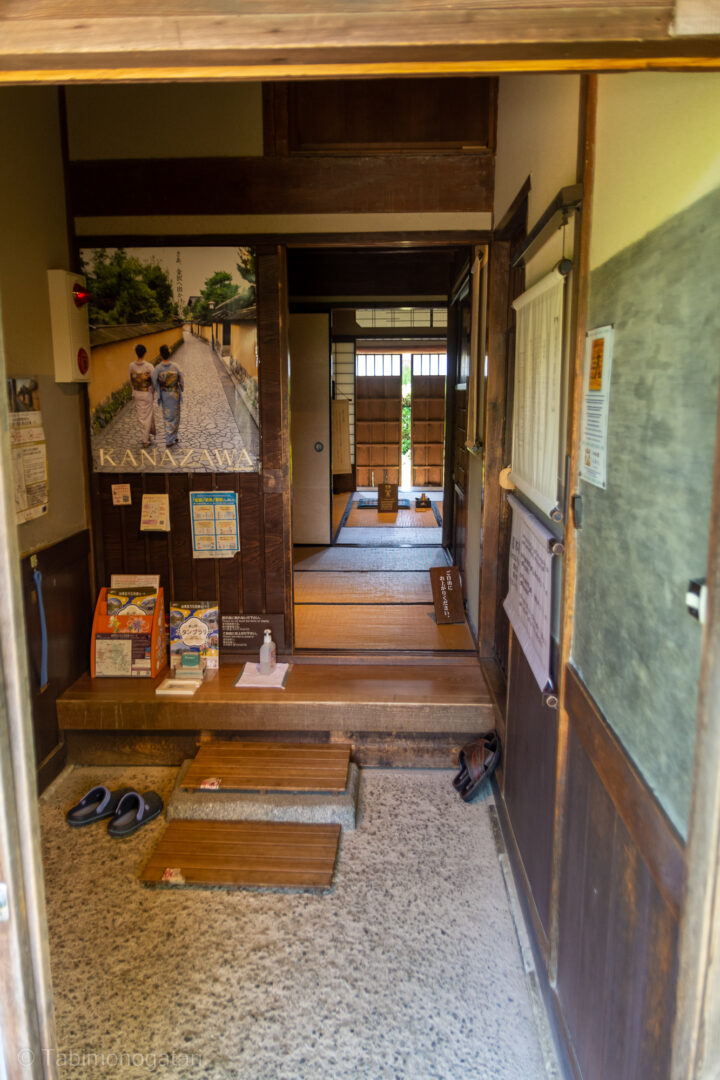



At the end of the district I continued a bit further and crossed the river to enter the nishi chaya district, a historic entertainment quarter that is still used in that capacity. Kanazawa is famous for these and is nicknamed Little Kyoto because of them. Because of that, there were only little houses open at noon.
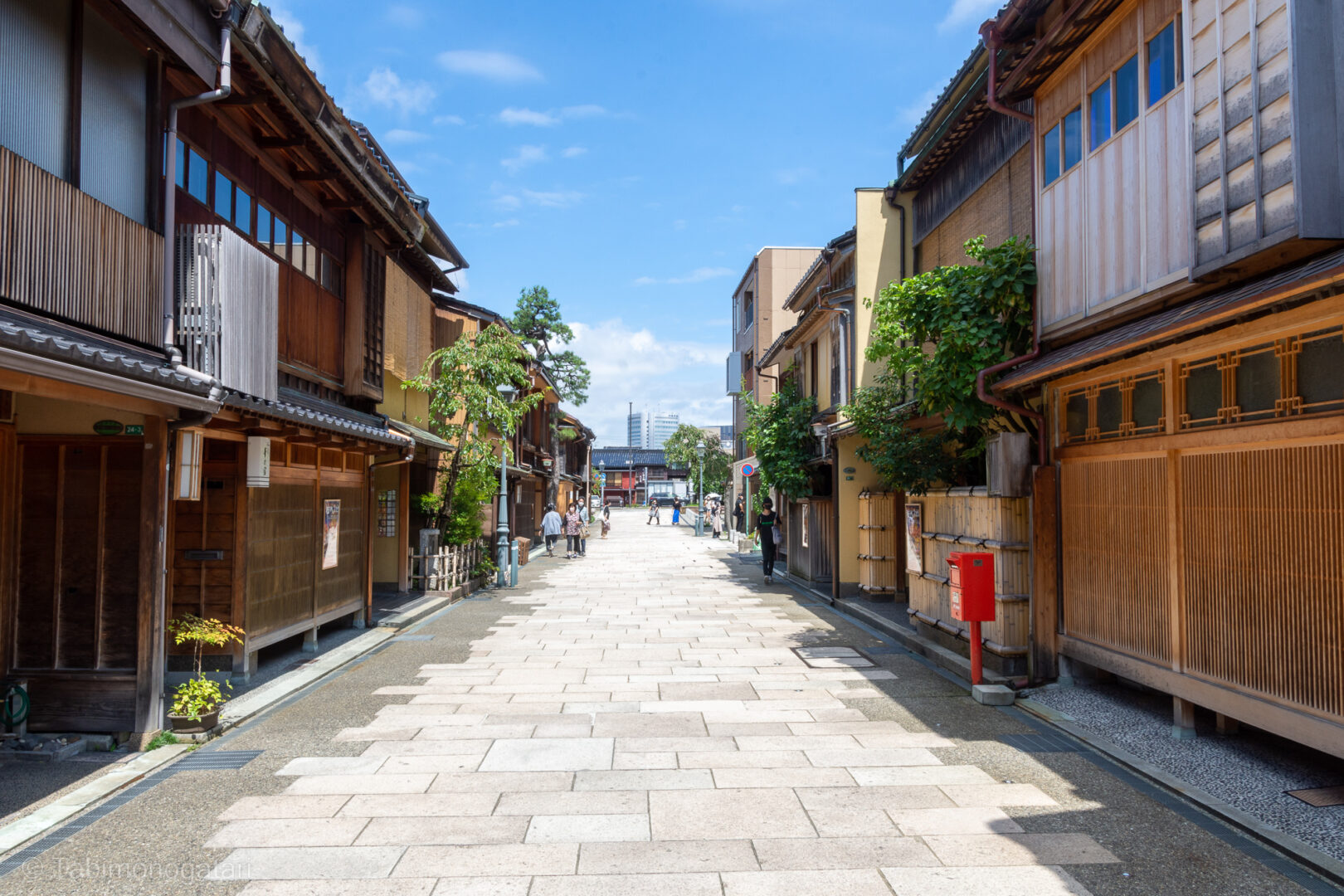


Backtracking a bit, I found myself in the downtown area filled with restaurants and bars. Along another channel I found my restaurant, Gyohan. The small restaurant specializes in local dishes with locally sourced seafood. I splurged and ordered the nodoguro aburidon – a kaisen don with flame-grilled nodoguro sashimi (in English blackthroat seaperch). Ishikawa prefecture is famous for the fish that is caught in the Japanese sea (North side of Honshû), and I never had it before.

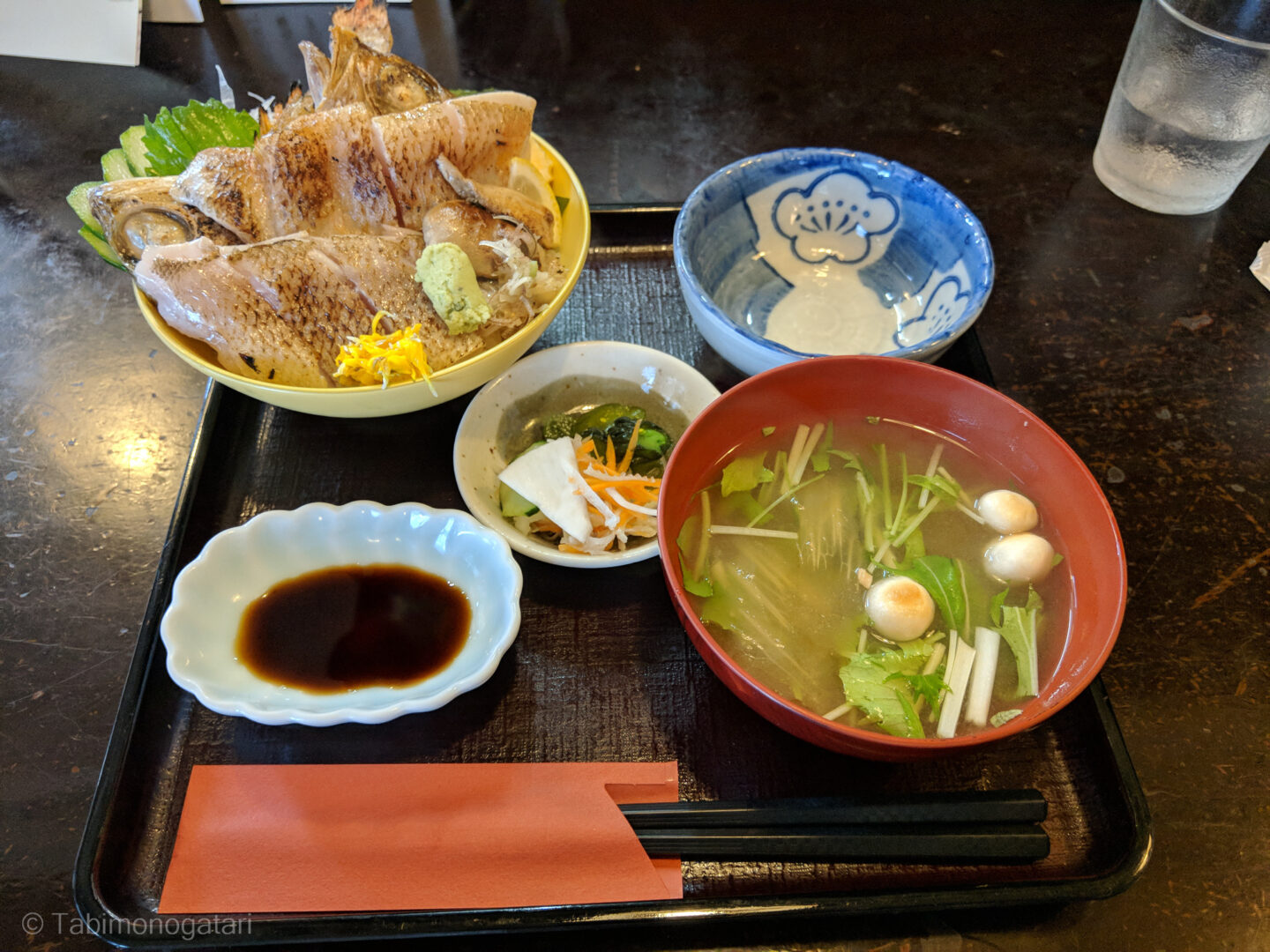
When I tried a bite, I knew I made the best choice. The fish was very delicious. It had a rich taste like fatty tuna and the smokey flavor notes from grilling further complemented the taste of the fish.
Afterwards, I stopped by the 21st Century Museum of Contemporary Art. I recommend seeing it, there are several interesting exhibitions all the time and the building itself is an artwork.
Across the museum lies Kenroku-en, one of the three great Japanese gardens of Japan. In May I visited Kouraku-en in Okayama, but the last one (Kairaku-en In Mito) is still on the to-do list.
I saw the garden in Winter before, now it was quite a different experience. The garden is described to be pretty in every season. And indeed, the garden was nice to walk through even without cherry blossoms or red maple leaves.
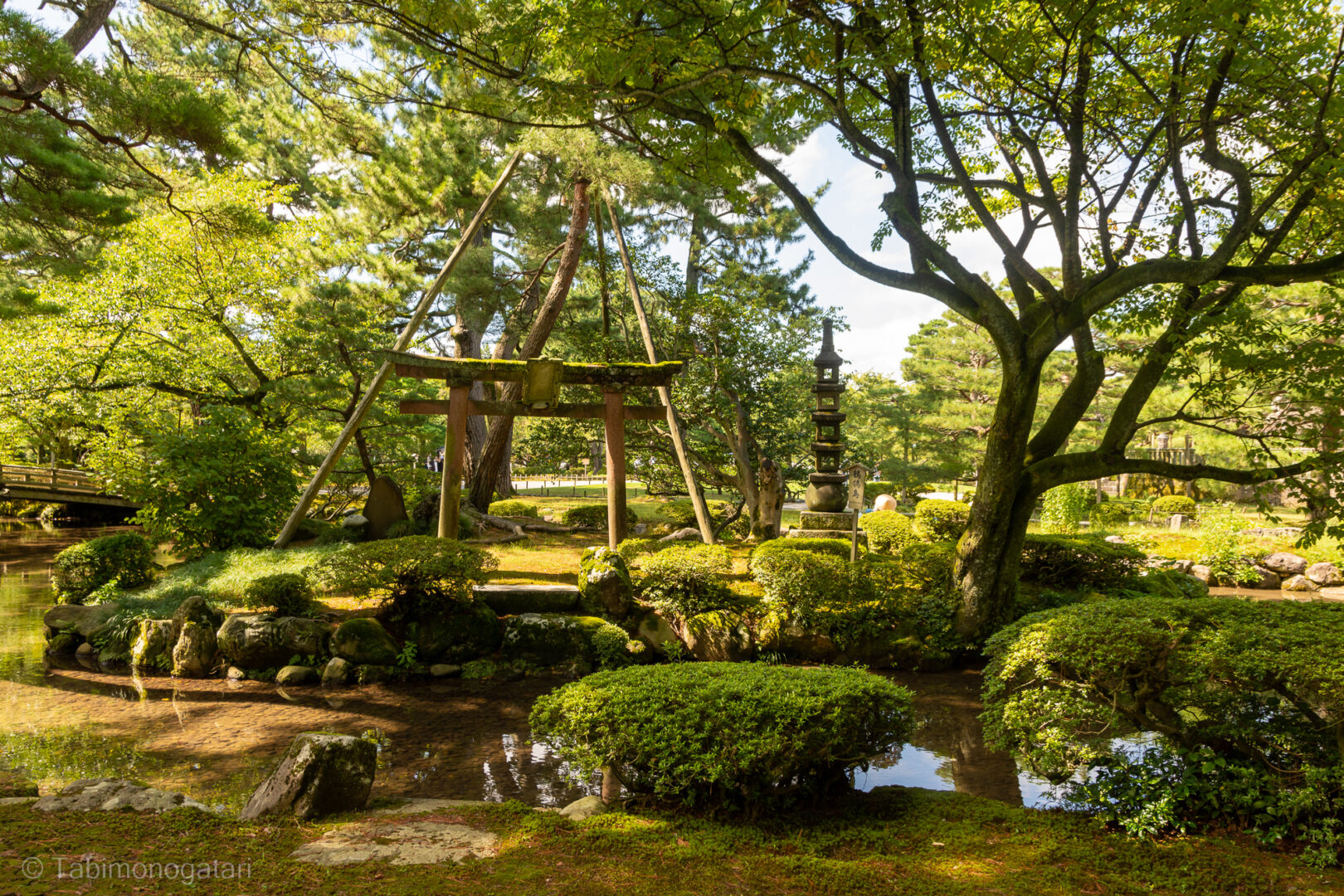
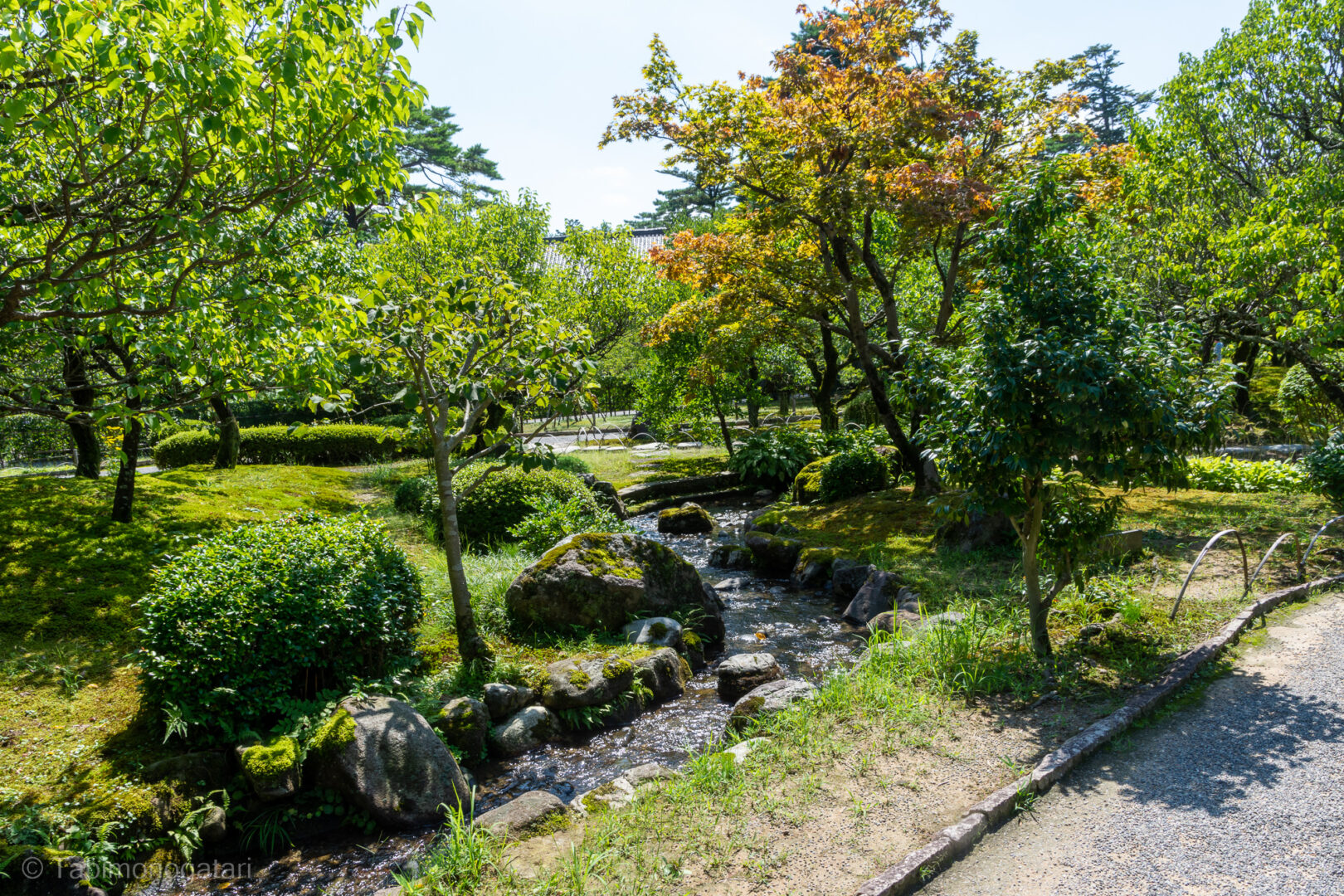



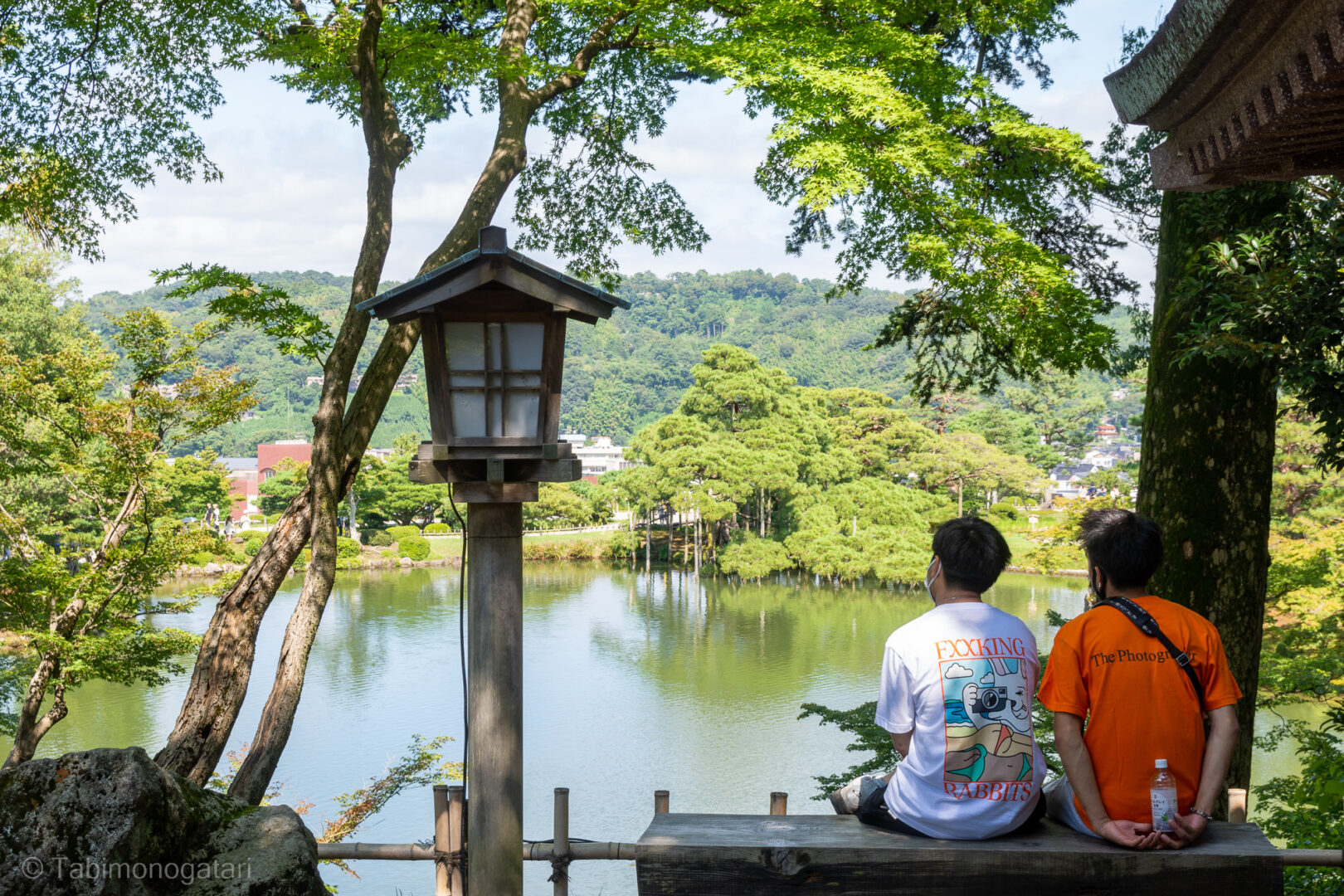
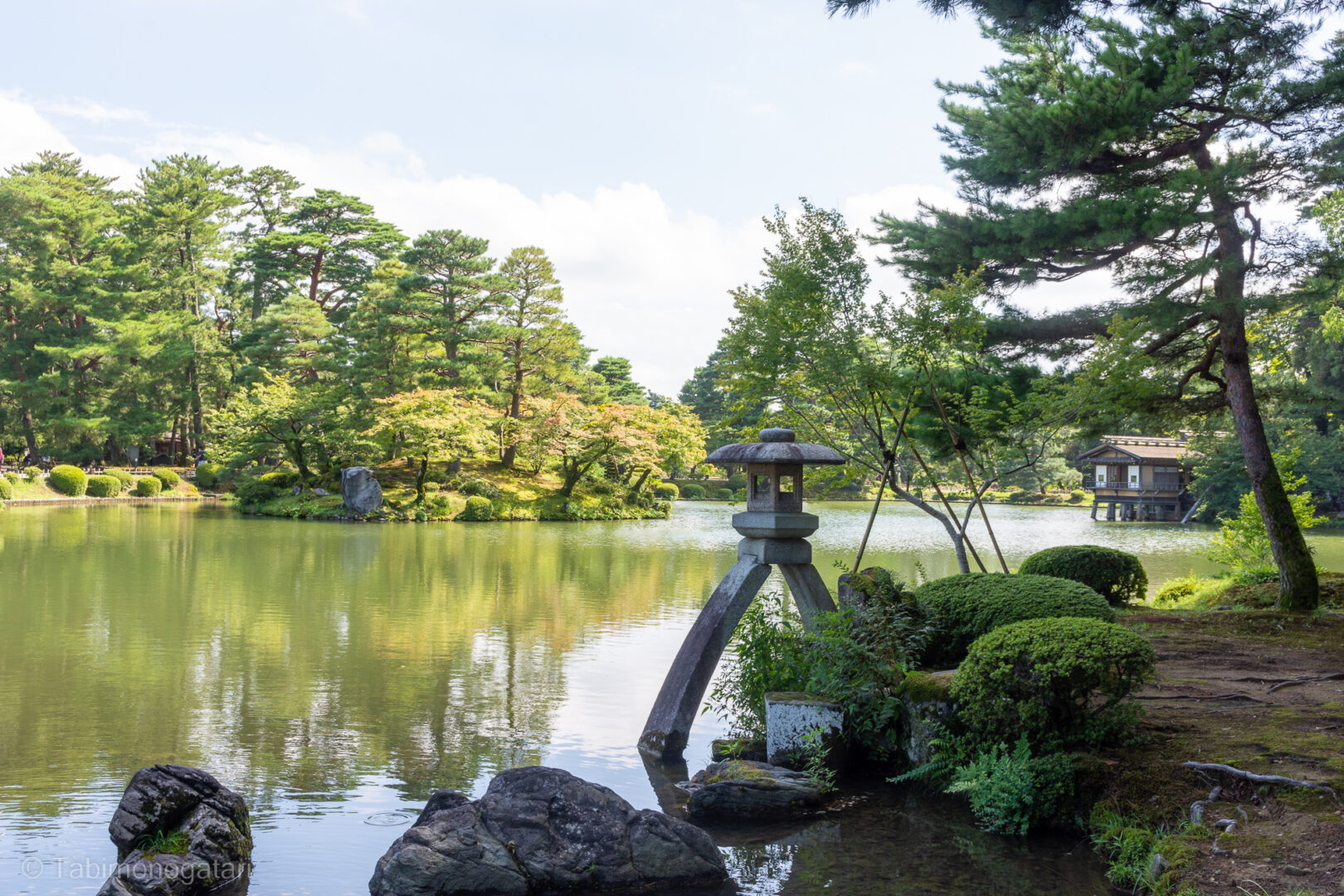
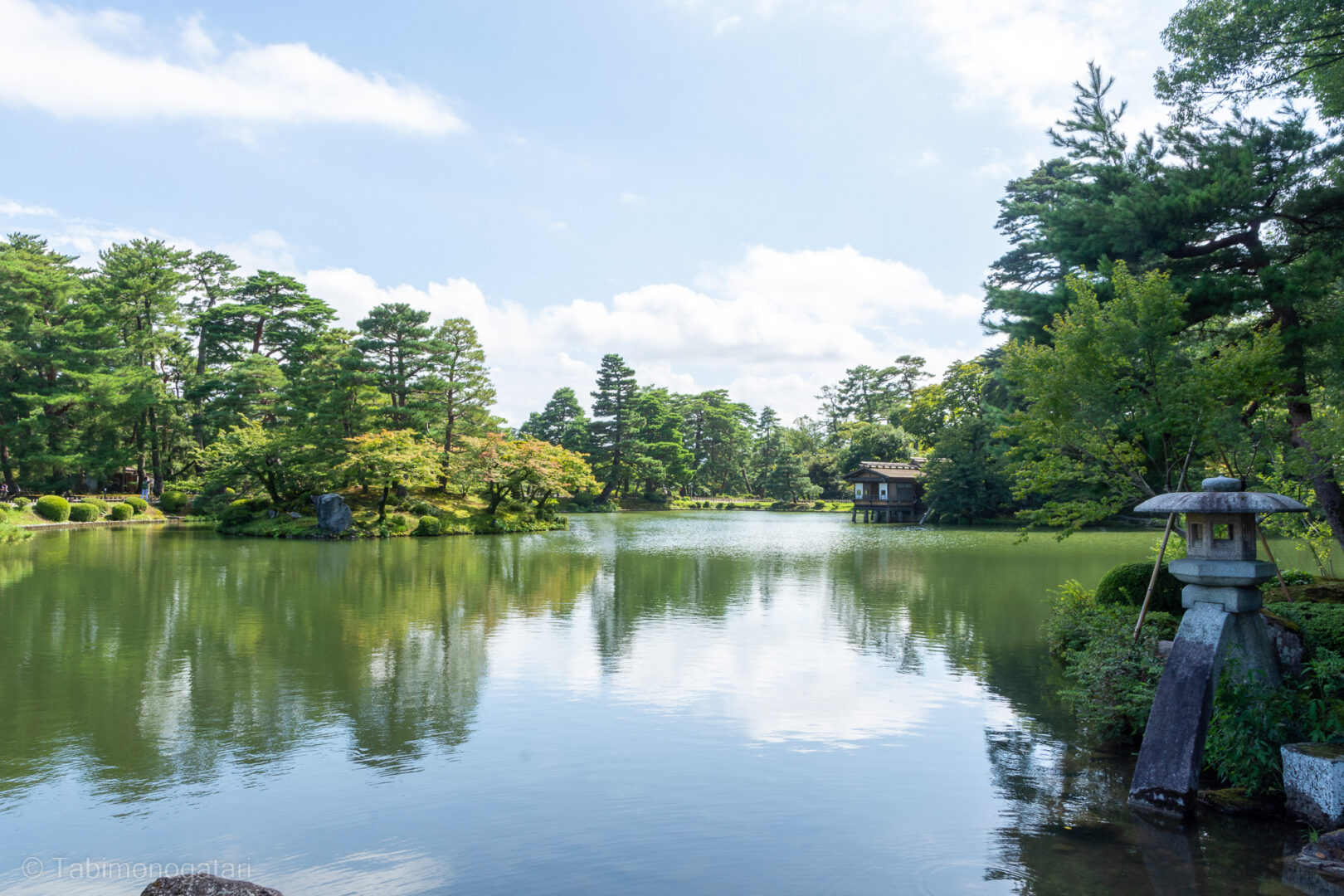

From there I walked to the other and bigger history tea district, higashi chaya district. There it was the busiest during the day. The traditional houses are also preserved here and most former chaya now host a shop or café. If you like ice cream decorated with gold leaf you are at the right address.
Just across the river lies the small third chaya district, Kazuemachi, although it is just one street.
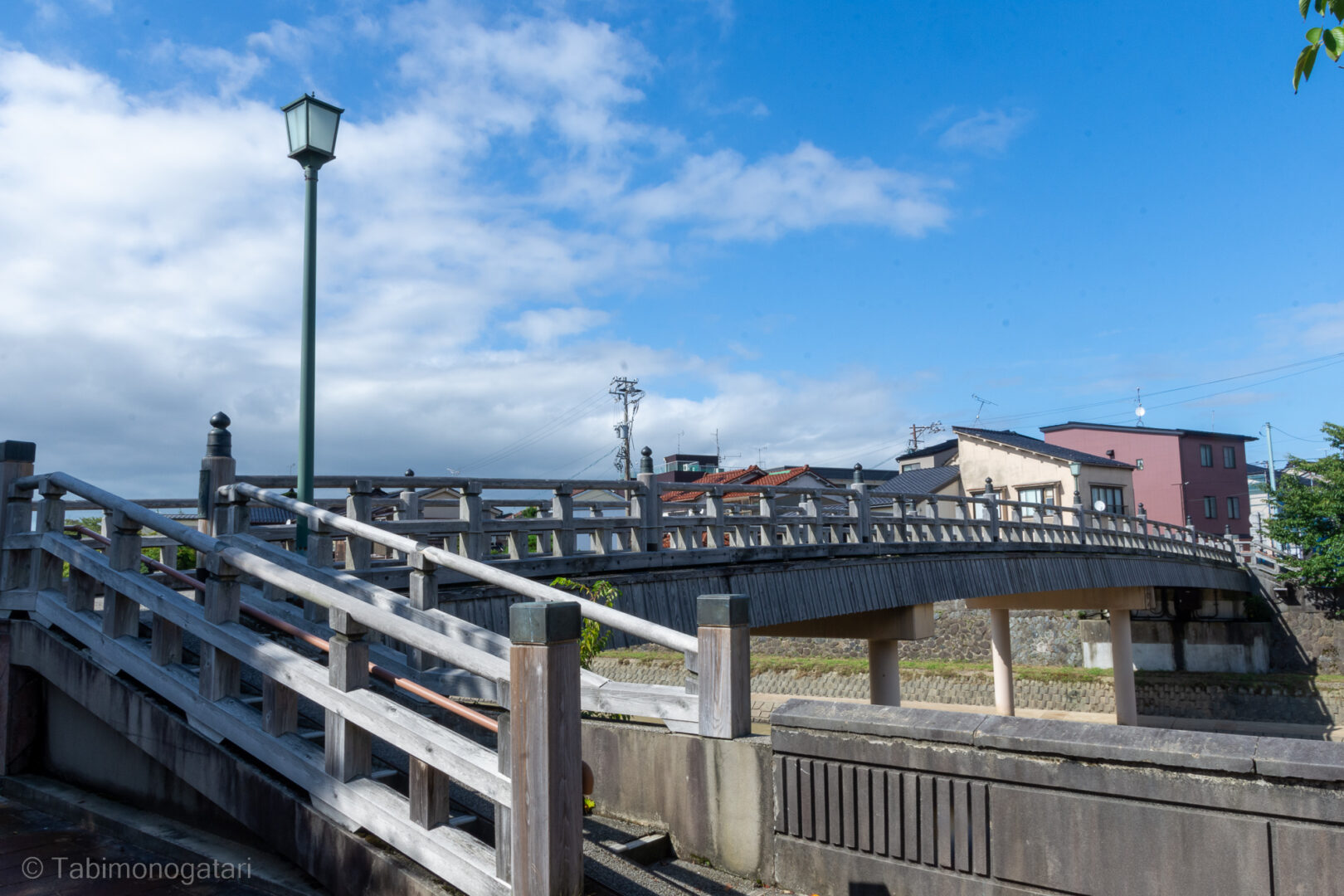

Here my day trip in Kanazawa ended, because I needed to return to Kyoto. Fortunately the Thunderbird train, which was cancelled because of the heavy rain yesterday, ran again on schedule.